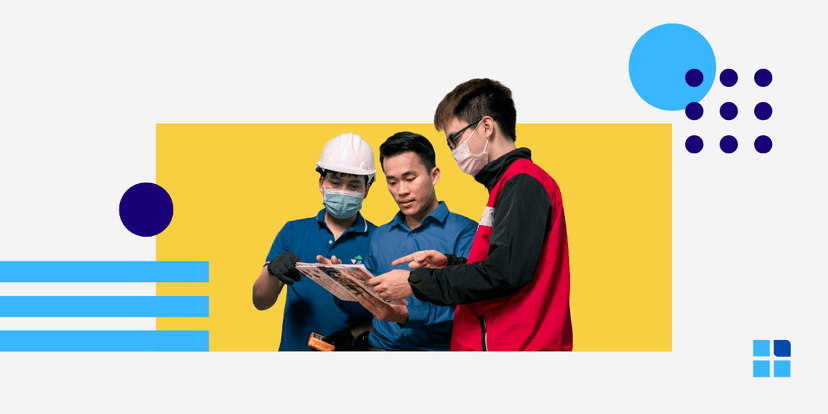Imagine capturing the essence of a complex process in a single, concise lesson that empowers your team to excel. One Point Lessons (OPLs) are powerful tools designed to distill essential knowledge into a simple, easily digestible format. These lessons are not just about teaching; they are about creating a shared understanding that empowers teams with clarity and precision. In this blog post, we will explore how mastering the art of One Point Lessons can drive efficiency, enhance learning, and foster a culture of continuous improvement within your organization.
What are One Point Lessons?
One Point Lessons (OPLs) are sometimes called single point lessons. They are short, visual instructional documents, usually only one page, designed to teach workers how to complete a specific action or task with precision and clarity. Essentially, these concise guides use a combination of short-form text and pictures to convey key points effectively. As a result, this ensures that the essential information is easily understood and retained.
One Point Lessons are particularly useful for communicating the expectations of a procedure or process quickly and accurately, serving as an ideal tool for addressing knowledge gaps. Additionally, they provide both formal training and on-the-job training. Thus, making them an invaluable resource for organizations aiming to enhance efficiency and consistency in their operations.
The four types of One Point Lessons
There are four primary types of One Point Lessons (OPLs), each tailored to address specific learning needs within an organization:

1. Basic knowledge
Purpose:
The basic knowledge OPL is designed to provide foundational information about a specific process, piece of equipment, or general workplace practice. These lessons are used to fill a knowledge gap and provide essential information for performing a task correctly.
Content:
- Introduction to equipment or tools: Basic operational instructions, including key functions and components.
- Process overview: Step-by-step guidance on how a particular process should be carried out.
- Terminology and definitions: Clarifying industry-specific terms or jargon essential for daily operations.
Benefits:
- Enhances comprehension of workplace tasks and procedures.
- Serves as a quick reference guide for new employees or team members transitioning to new roles.
- Promotes consistency in task execution across the organization.
2. Safety
Purpose:
Safety OPLs focus on ensuring workers know and understand current safety procedures and new safety procedures. These lessons are vital for preventing accidents and promoting health and safety compliance.
Content:
- Safety procedures: Detailed instructions on performing tasks safely, including use of personal protective equipment (PPE).
- Emergency protocols: Steps to follow in case of an emergency. For example, a fire evacuation or medical emergency response.
- Hazard identification: Information on recognizing potential safety hazards and how to mitigate them.
Benefits:
- Reduces the risk of workplace accidents and injuries by reinforcing safe practices.
- Ensures that all employees are aware of and understand safety protocols.
- Fosters a culture of safety and accountability within the organization.
3. Problem case
Purpose:
Problem case OPLs are developed to address specific issues or challenges that have occurred in the workplace. These lessons focus on problem-solving and provide guidance on how to prevent similar occurrences in the future.
Content:
- Problem description: An overview of the issue, including when and where it occurred.
- Root cause analysis: Examination of the underlying causes of the problem.
- Corrective actions: Steps taken to resolve the issue and prevent recurrence.
Benefits:
- Encourages proactive problem-solving by learning from past incidents.
- Enhances employees' ability to recognize and address potential issues quickly.
- Contributes to continuous improvement by documenting and sharing solutions.
4. Improvement case
Purpose:
Improvement case OPLs focus on sharing successful strategies and innovations that have led to process improvements or increased efficiency. These lessons aim to inspire further improvements and encourage the adoption of best practices.
Content:
- Improvement overview: Description of the change or innovation implemented.
- Benefits achieved: Explanation of how the improvement has positively impacted operations.
- Implementation steps: Detailed process for adopting the improvement, including any tools or resources required.
Benefits:
- Promotes a culture of continuous improvement by highlighting successful initiatives.
- Encourages employees to contribute ideas for enhancing efficiency and productivity.
- Provides a framework for replicating successful improvements across different areas of the organization.
What are the benefits of One Point Lessons?
One Point Lessons (OPLs) offer a multitude of benefits that can transform the way organizations disseminate information and train their employees. These benefits include:

1. Improved knowledge retention
One Point Lessons use concise text and visual elements, which help learners retain information more effectively. In fact, by presenting only the key points in a simple format, these lessons minimize cognitive overload and make it easier for employees to remember and apply the information in real-world scenarios.
2. Enhanced communication
By distilling complex processes into straightforward, visual documents, One Point Lessons improve communication across teams. They provide a clear and uniform reference point. Thus, reducing misunderstandings and ensuring that all team members are aligned with a common understanding of specific tasks and procedures.
3. Increased efficiency
One Point Lessons streamline training and information dissemination. That is to say, they allow employees to quickly grasp essential procedures without the need for lengthy manuals or training sessions. This efficiency reduces downtime and accelerates the onboarding process for new employees. Thereby, enabling them to contribute more quickly to their roles.
4. Consistency in operations
Standardizing processes through One Point Lessons ensures that tasks are performed consistently across the organization. This uniformity helps maintain quality standards and minimizes variations in task execution. As a result, this leads to more predictable and reliable outcomes.
5. Continuous improvement
One Point Lessons encourage ongoing refinement by serving as living documents that can be updated as processes evolve. They support a culture of continuous improvement by allowing teams to easily incorporate feedback and updates. Therefore, ensuring that procedures remain relevant and effective over time.
Four common use cases for One Point Lessons
One Point Lessons (OPLs) are invaluable tools utilized across various aspects of an organization to ensure clear, efficient communication and training. Here are four common use cases for OPLs:

1. Quality and inspections
One Point Lessons are frequently used to convey specific quality standards and inspection procedures to employees.
By illustrating key points with concise text and visuals, One Point Lessons ensure that all team members understand the criteria required to maintain product quality. This approach minimizes errors and ensures consistent adherence to quality standards across the board.
As a result, One Point Lessons help in achieving uniformity in inspections, reducing defects, and maintaining customer satisfaction by delivering high-quality outputs.
2. Safety
Safety is a critical area where One Point Lessons are employed to communicate essential safety protocols and procedures.
These lessons highlight crucial safety instructions, such as the correct use of personal protective equipment (PPE) and emergency response actions. By breaking down complex safety protocols into simple, digestible formats, One Point Lessons help prevent workplace accidents and injuries.
What’s more, they foster a culture of safety awareness and accountability. Therefore, ensuring that employees remain vigilant and informed about potential hazards.
3. Equipment operation
One Point Lessons are instrumental in providing clear, step-by-step instructions on operating machinery and equipment.
By using visual aids and straightforward language, these lessons help operators understand the correct procedures for starting, running, and shutting down equipment safely and efficiently.
This clarity reduces the risk of operational errors, equipment damage, and machine breakdowns. Thereby, enhancing productivity and prolonging the lifespan of machinery.
4. Maintenance
In the area of maintenance, One Point Lessons serve as quick reference guides for routine tasks such as lubrication, cleaning, and minor repairs.
They simplify complex maintenance routines into easy-to-follow steps. As a result, this ensures that maintenance personnel can perform tasks consistently and accurately.
This approach minimizes equipment downtime and supports a proactive maintenance culture, where regular upkeep is prioritized to prevent larger, costlier issues from arising.
Enhancing training and efficiency with digital One Point Lessons
Digital One Point Lessons offer significant advantages in enhancing training and operational efficiency, particularly when combined with technology.
By providing immediate access to training materials and information, they contribute to enhance the desired area. For instance, quality, maintenance or equipment operation. Workers can quickly reference procedures or protocols on their devices, ensuring they are well-informed and compliant with relevant standards. This immediacy reduces the reliance on bulky binders and paper-based materials. Thereby, streamlining the learning process and making information more accessible and actionable.
Moreover, digital One Point Lessons improve continuous improvement efforts by allowing for real-time updates and seamless knowledge transfer. When integrated with softwares such as a lean enablement software or a connected worker software, you can create, organize, and browse One Point Lessons easily. This, in turn, ensures that all team members have access to the most current information, fostering a culture of continuous learning and adaptation.
Ultimately, utilizing digital work instructions provides clear, concise guidance. All of which are crucial for maintaining consistency in task execution. By leveraging technology, you can facilitate the transfer of knowledge, enhance continuous improvement efforts, and deliver training through digital platforms. This not only ensures that your workers are equipped with the latest information, but also supports ongoing organizational growth and efficiency.







